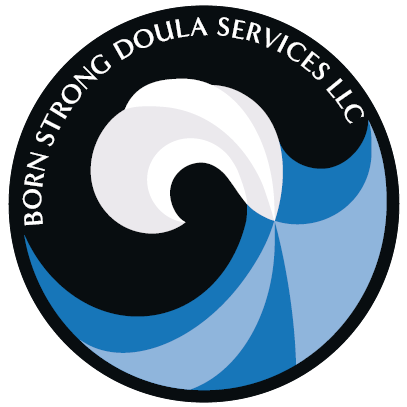vaginal birth after cesarean (VBAC)
Not so long ago, and maybe still today, it was common to hear the phrase, “Once a cesarean, always a cesarean.” I want you to know that this isn’t the case. There is a growing movement in favor of vaginal birth after cesarean, or VBAC. It is perfectly valid to have concerns about either (or both) a VBAC or an elective repeat cesarean (ERC), so let’s start by comparing the risks and advantages of both.
ELECTIVE REPEAT CESAREAN (ERC)
At face value, an ERC may seem like the safer option and will often be presented as such by an OBGYN. There is lower risk of uterine rupture and it generally avoids other risks associated with labor.
However, a cesarean is also a major surgery that comes with risks to not only the birthing parent and current baby but any future pregnancies as well. Risks to the birthing parent include infection, blood clots or hemorrhage, a longer recovery period, and difficulties nursing. There are also increased chances of placenta previa (where it grows over the cervix) and accreta (where it imbeds too deeply in the uterine wall). There is also a greater likelihood of another future repeat cesarean.
There are also risks to your baby such as increased likelihood of short-term respiratory problems, especially if your baby is born before 39 weeks. Babies born via cesarean are also more likely to develop childhood asthma as well as autoimmune and allergic diseases. They will also most likely have reduced biodiversity in their gut microbiome and may be at greater risk of childhood obesity.
VBAC
One of the biggest concerns regarding VBAC is uterine rupture. While it is a very serious complication, the absolute risk is much lower than is often disclosed. The risk is roughly 0.47%, or 1 in 200. This percentage increases if labor is induced and varies depending on the induction method used. You will likely be encouraged to accept continuous fetal monitoring (CFM), as changes in baby’s heart rate are one of the leading signs of a rupture. VBAC success rates also vary, depending on previous birthing history.
Successful VBACS have been shown to have fewer complications than elective repeat cesareans. Advantages of VBAC include increased chance of future vaginal births; shorter recovery times; and increased likelihood of a successful breast or chestfeeding relationship. It also avoids all the risks associated with major abdominal surgery.
PREPARING FOR A VBAC
So let’s say you’ve decided that VBAC is the right path for you. How do you start preparing for that?
Do the inner work. Your mind is a powerful tool. Fear is a natural human response but rather than let it control your decisions, work to unravel why you are feeling fear in the first place. One of the most challenging but rewarding things you can do is learn to trust yourself. Quiet the outside voices and really listen to what your intuition is telling you. Believe that your body can do the work, and trust in the process of birth.
Hire a doula. Doulas are usually more than happy to assist by providing up-to-date research; suggesting support groups; and recommending a supportive provider (see below). They can also help you find language to advocate for yourself and your goals.
Get in touch with the local International Cesarean Awareness Network (ICAN) chapter. Milwaukee has an active ICAN chapter that you can follow on Facebook or reach out to by email at milwaukee.wi@ican-online.org. They hold monthly virtual meetings and all are welcome.
Find a supportive provider. If you currently have a provider that you like, here is a list of questions to start a conversation about VBAC. Closely observe to see if their reactions match their words. You can also check if their VBAC stats correlate to what they’re telling you. If you are having doubts about your provider, search for a new one. This is where your doula or local ICAN chapter can help!
If you are interested in learning more, please check out the following resources for more information:
I am not a medical professional. The information in this post is not intended as medical advice. Please consult with your intuition and your healthcare provider about what is right for you and your family.
